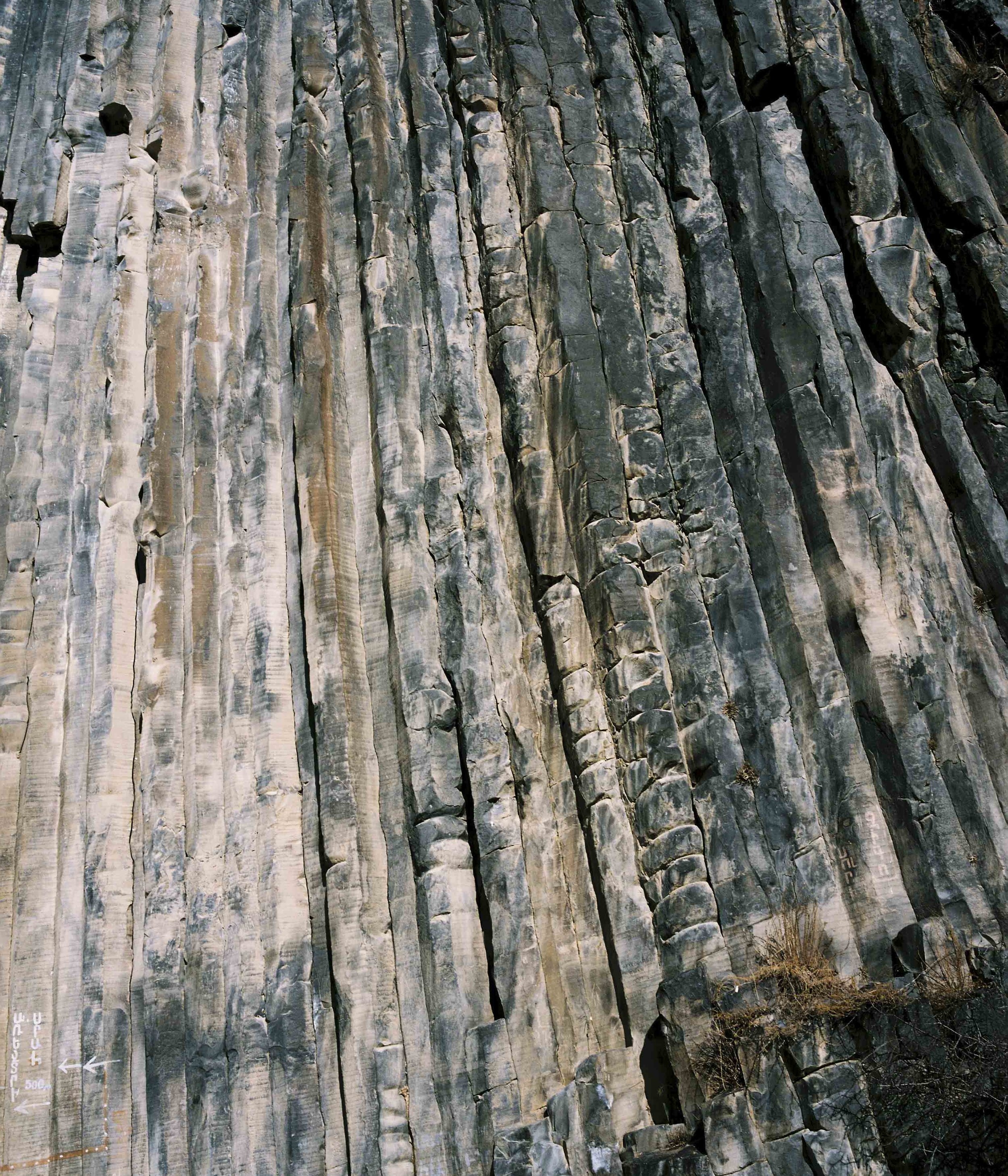Rebecca Topakian – Dame Gulizar and Other Love Stories
WORDS BY HANNAH GEDDES
A cave littered with religious memorabilia, a stomach piled with apricots, crimson-stained snow and family photographs printed onto rocks all form part of French-Armenian photographer, Rebecca Topakian’s project, For Dame Gulizar and Other Love Stories. Intrigued by the history of her Armenian family and the story of her great grandparents Gulizar and Garabed, Topakian was drawn to Armenia to trace her past.
Topakian made this project over a two-year period, with three trips to Armenia, concluding in a four-month artist residency. Although the journey was partly one of self-discovery, Topakian’s images also address modern Armenia. Military symbols in her images represent the power of the army while the lack of women as subjects speak to patriarchal constructs.
Romanticised landscapes might distract momentarily before the portrait of a young man laughing in army uniform or blood-stained snow remind us that the military and violence are always present. Armenia carries the weight of war due to the ongoing Nagorno-Karabakh conflict, a territorial and ethnic dispute between Armenia and Azerbaijan over the contested region of Nagorno-Karabakh - and further back to the Armenian Genocide in the early 1900s. At 18, young men carry out two years of compulsory military service which has a transformative effect, forcing boys to become ‘masculinised’. Topakian’s portraits are intimate – her subjects are often part-naked or caught in personal moments – eyes shut or lying face down on the bed. The men are friends, lovers and strangers but we don’t know who is who. After a couple of months, Topakian started casting models on Tinder for the project – “I think it was interesting to use this platform made for seduction as a means to reverse patriarchal paradigm in Armenia. I even talked about that with the men I met, and it led to interesting conversations.”
There are hardly any women in the project. Armenia still has a patriarchal society and Topakian’s understanding of Armenia has always been a masculine one. Topakian used the power of the camera to regain some control. The very act of “driving the model” and “fixing the model's image forever” allowed her to address the gender imbalance. She would “direct my models, tell them how to pose... Once, I even had this young man over in my studio, made him pose topless on the floor and arranged a mountain of apricots on his belly...”
The work communicates a desire to understand one’s heritage – a need to detangle the romanticism and nostalgia of stories told by older generations, from the reality of the country itself. Printing on rocks and stones became a crucial part of the project for Topakian. One of the challenges she faced was that although her grandfather was from Istanbul, the land she was longing for was the Armenia of her great grandparents. As a child she was too young to understand the complex history, “that parts of Turkey was land to Armenians too.” Her grandfather never made it to Armenia and so the action of creating a connection to the country by producing a tangible object, enabled her to do “something symbolic” for her grandfather, “to put him back, in a land he deserved to see, with his people.”





